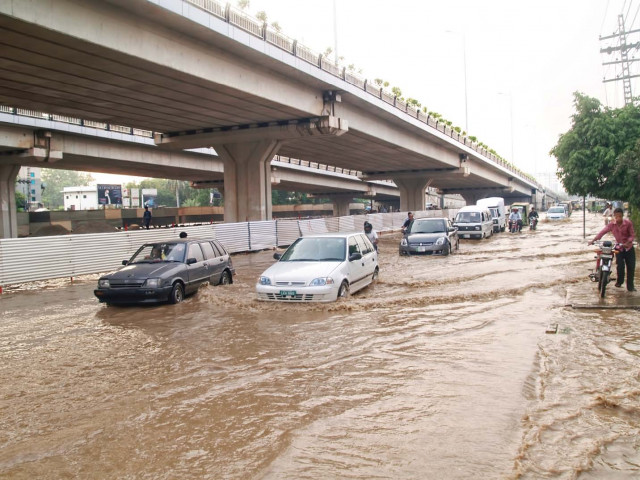Need for more dams: Water storage capacity drops 35%
Accumulation of silt eroding space available to store water in dams

“During this monsoon season, K-P has received the highest amount of rainfall -- 74% -- followed by Punjab (26%). Sindh has received the lowest amount of rain which is 95% below the above average followed by Balochistan (30%), GB (7%) and AJK (3%),” he said. PHOTO: EXPRESS/ABID NAWAZ
Talking to The Express Tribune, Pakistan Meteorological Department (PMD) Director General Ghulam Rasul said we have already been facing shortage of reservoirs for storing rainwater for future use.
“Therefore this further decrease in the storing capacity of the already existing reservoirs will worsen the situation in the future,” he said.
He said during the current monsoon season, Pakistan is not storing rainwater in dams but releasing it to create sufficient storage space to meet a flood-like situation.

In overall terms, the country’s total water storage capacity is less than 30 days of minimum requirements, which is considered too low and close to water scarcity against global standards of 120 days of coverage.
Pakistan is estimated to be declared a water-scarce nation by 2025 unless new capacity addition is achieved. The country’s per capita water availability has dropped from over 5,300 cubic metres in the 1950s to about 1,000 cubic metres now which is the scarcity benchmark.
Meanwhile, talking about the chances of riverine flooding in Pakistan in the coming weeks, Rasul said, “At present, there are less chances of riverine floods in Pakistan because India releases water when its reservoirs cross the maximum storage limit. At present, they are 60-70% full. It is expected that in August they will cross the maximum level,” he said.
Talking about Pakistan, he said during the last 21 days Pakistan had received five percent above normal monsoon rain.
“During this monsoon season, K-P has received the highest amount of rainfall -- 74% -- followed by Punjab (26%). Sindh has received the lowest amount of rain which is 95% below the above average followed by Balochistan (30%), GB (7%) and AJK (3%),” he said.
Rasul said in the coming weeks, Pakistan will receive third monsoon spell which is expected to generate urban flooding.
Published in The Express Tribune, July 22nd, 2016.



















COMMENTS
Comments are moderated and generally will be posted if they are on-topic and not abusive.
For more information, please see our Comments FAQ